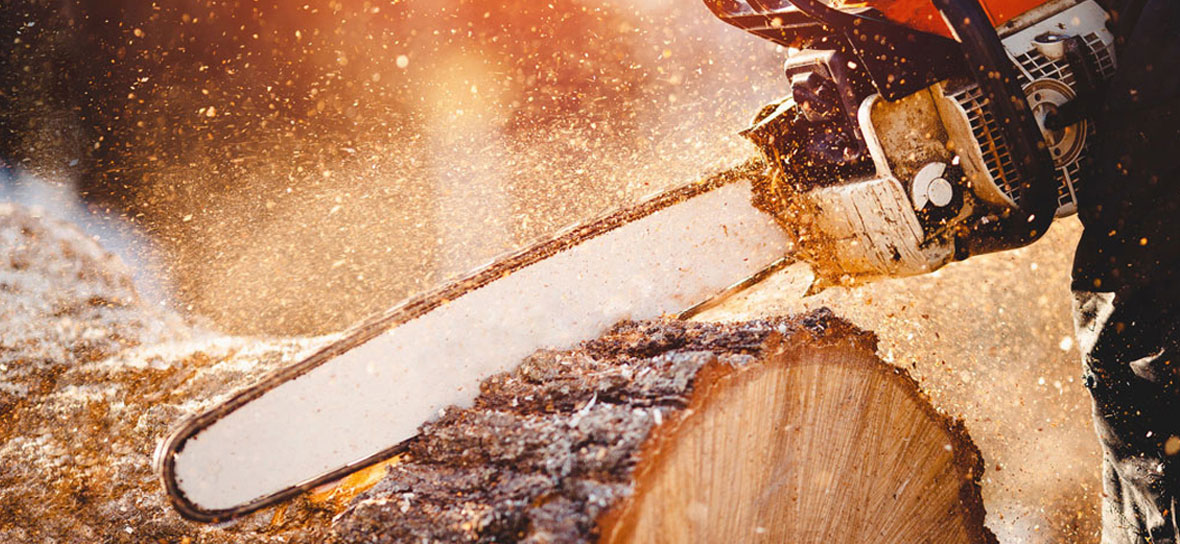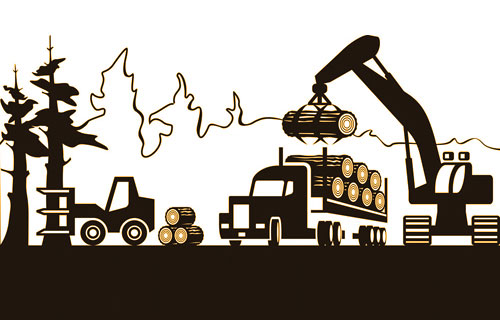Our Services
Timber stand improvement (TSI) services are available to support practices that improve the vigor, stocking, composition, productivity, and quality of forest stands. A TSI goal is the continued production of more and better timber products. These practices can help convert lower quality timber stands into faster growing and more productive stands.
Some basic TSI practices include:
- Prescribed burning in pine stands to remove undesirable hardwoods.
- Reduce the potential for wildfires, and improve wildlife habitats.
- Thinning to relieve overcrowding and increase the growth rate of crop trees.
- Sanitation cutting to remove trees damaged by insects, diseases, wind, or ice.
Shovel logging services are available to support moving logs from the forest to the road. Rather than driving out to the log and dragging it back to the landing, a loader is utilized to grab logs and/or trees within reach, and drop them closer to the road.
Logs further from the road can be shoveled to the landing site. Shovel logging can make use of the loader between log truck arrivals. It can also reduce soil disturbance, since it requires only a single pass to move all the logs in reach. Alternatively, skidding can be more cost efficient for logs further from the road.
Timber felling services are available to support the process of cutting down trees. Felling services include both hand and machine felling operations. Saws and/or chainsaws are used to fell a tree, which is typically followed with limbing and skidding operations.
To fell a tree, a faller makes four cuts using a chain saw: a top, bottom, back and felling cut. The goal is to leave a sufficient hinge of wood between the bottom cut and felling cut. This helps to reduce tree kickback and provides greater control over where the tree will fall. Once a tree is on the ground, loggers remove its limbs and cut it into logs, a process known as bucking. This logging operation is then followed with skidding, or moving logs from the forest to the landing area.
Power line refuse clean up services are available for power lines and right-of-way clearing projects such as site preparation and development, cutting and clearing brush, nature and recreational trail creation, as well as seismic exploration. In the aftermath of a storm, our crews can trim or remove any tree that is interfering with power restoration.
When our crews trim trees, they follow industry-accepted standards which vary based on the voltage of nearby electric lines. Sometimes, it may be necessary to remove all trees within the defined right-of-way to ensure safe and reliable service.
Fire hazard reduction services are available to support firebreak construction, commercial thinning, as well as land and brush clearing. In the construction of a firebreak, the primary goal is to remove deadwood and undergrowth down to the soil. Firebreaks are constructed and maintained according to the established practices of forestry and fire protection engineering, which is also known as best management practices (BMP).
Pioneer Logging strives to maximize the effectiveness of firebreaks so as to slow the spread of wildfires. By using firebreaks of sufficient size and density, we help to reduce the potential size of wildfires. Additionally, fire preventative measures are performed to help maintain the ecology of the forest, as well as reduce the impact of wildfires on air pollution.
Log deck removal services are available to support the removal of a pile of logs on a landing area. The landing area (deck) is the busiest place on the entire logging operation. Proper safety guidelines are followed to prevent accidents from occurring.
Heavy equipment vehicles including; skidders, loaders, and trucks are typically present during log deck operations. As such, workers should remain at safe distances from the active log piles.
Tractor piling services are available to pick-up, move, and place excess logging debris (i.e., slash) into compact piles. Piling operations utilizes a loader heel boom grapple to reach far to the side to grab, lift, and move surplus tree limbs, tops and broken pieces. Site is readied for reforestation and piles can be later burned.
Slash is the term used to describe the treetops, limbs and other woody material left behind after a timber harvest. How the slash is dealt with is an important consideration in the logging process. Piling and burning is the most common method of slash treatment.
Equipment rental services are available to support a wide-variety of logging operation initiatives. Our equipment rental services are competitive and flexible to support a wide-variety of logging operations.
Please see our Equipment page to identify specific vehicles and machinery that can be made available for your specific needs.
Road construction services are available to support right-of-way clearing and maintenance for roads, highways, pipelines, and other utility lines. This process often requires complete removal of standing trees, stumps, and vegetation.
Our ability to expertly create roadways into your forestlands is possible thanks to the years of experience and know-how. We pride ourselves on impacting the environment as little as possible by utilizing the right equipment for the job. Your lands are our first priority.
Land and lot clearing services are provided for commercial and residential land clearing projects such as site preparation and development, cutting and clearing brush, nature and recreational trail development.
Salvage logging services are available for logging trees in forest areas that have been damaged by wildfire, flood, severe wind, disease, insect infestation, or other natural disturbance in order to recover economic value that would otherwise be lost.
As with other logging operations, salvage logging may be either by selection or thinning, for which a regeneration plan may be put in place after the logging. Salvage logging may include the removal of remaining live trees in predominantly dead stands.
Sanitation cutting services are available to harvest trees for the purpose of removing insects or diseases from a stand of trees. Sanitation cutting is used to prevent the diseases or pests from spreading to other nearby trees. It is a form of intermediate management that is employed in order to improve an already existing stand of trees.
The management of clearcutting forestry objectives (i.e., Silviculture) promotes healthy regeneration of new trees on a site, and clearly distinguishes it from deforestation. Other methods that may be employed include shelterwood cutting, group selective, single selective, seed-tree cutting, patch cut, and retention cutting.
We can provide your business with logging services, equipment, and support that you may need.
Supporting: Government, Commecial Businesses and private land-owners.




